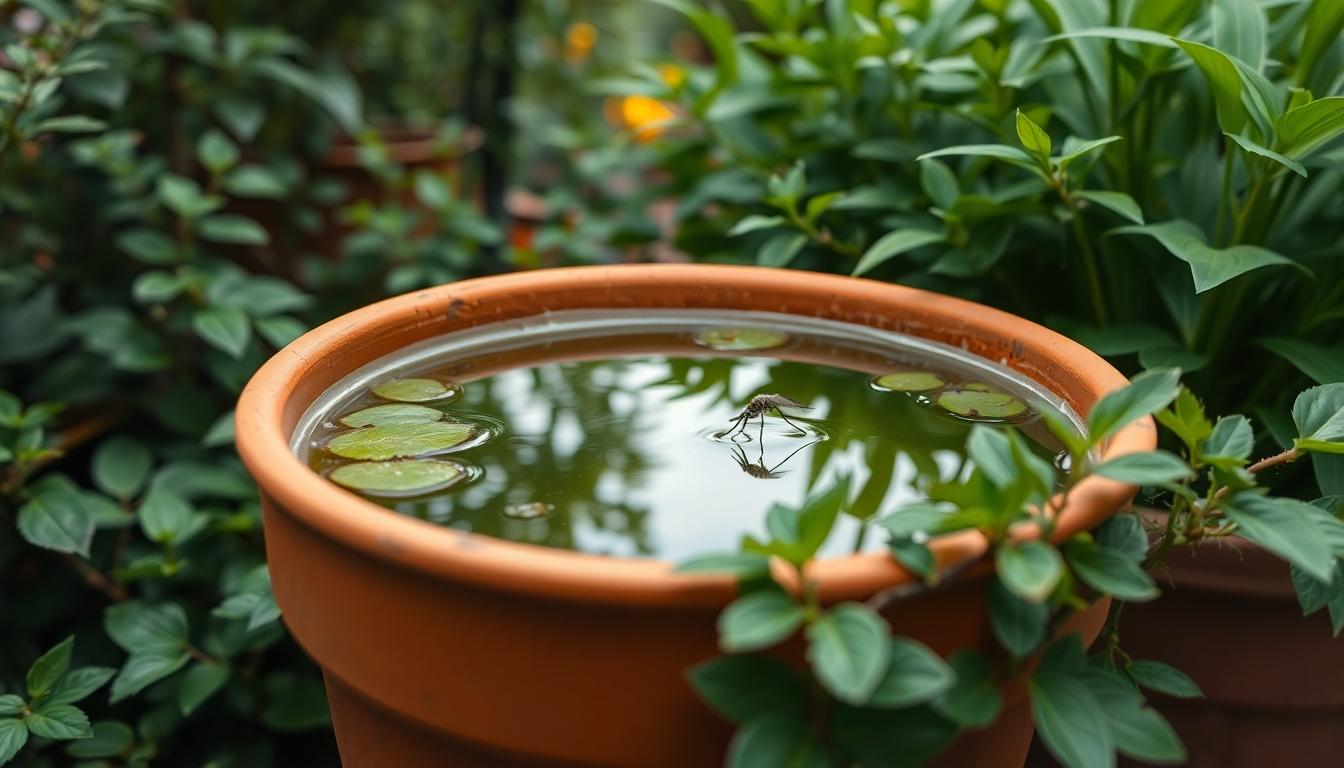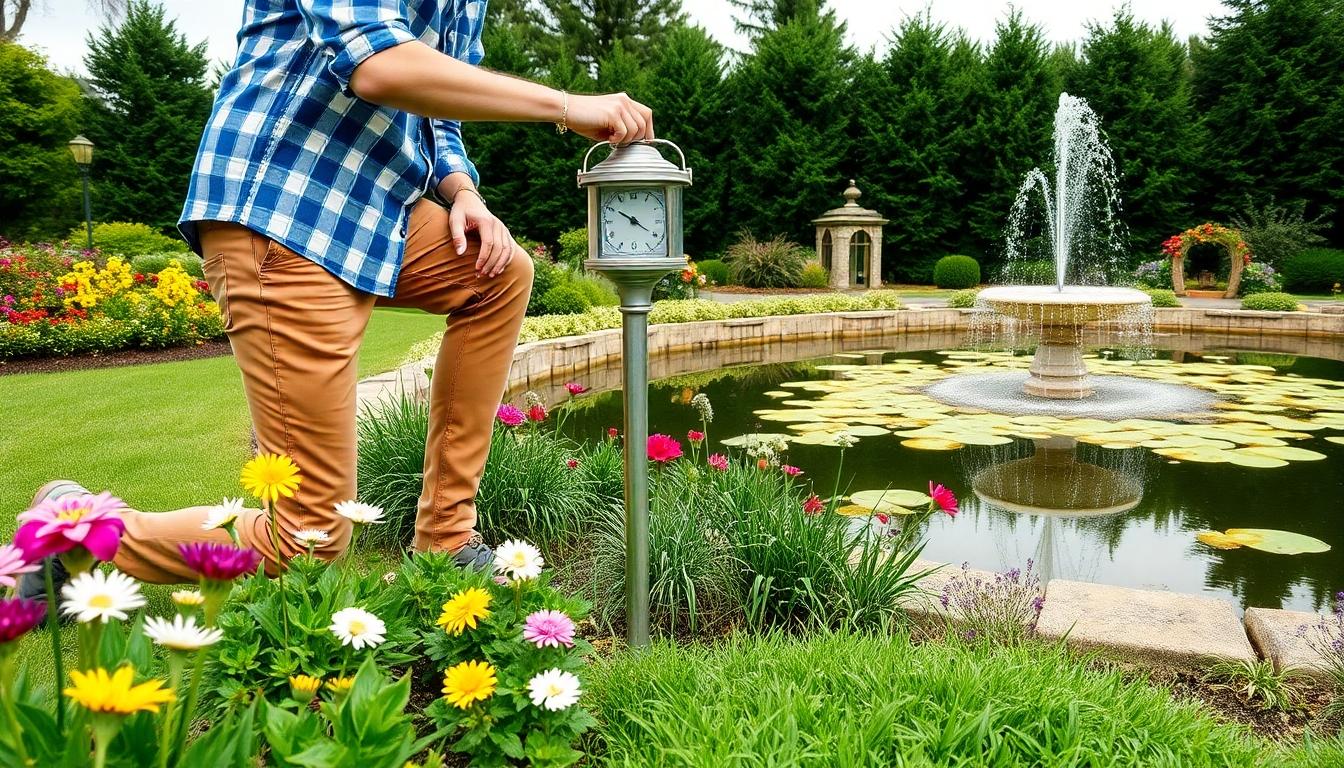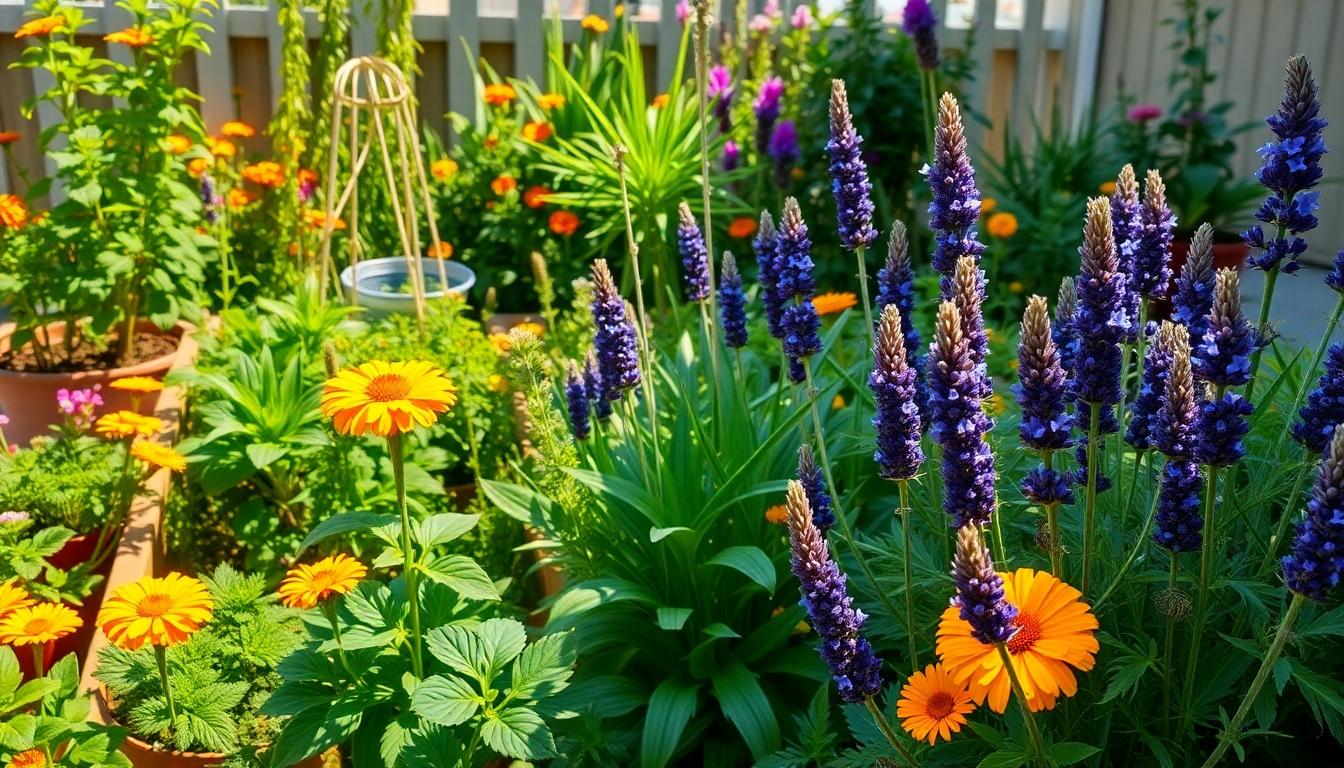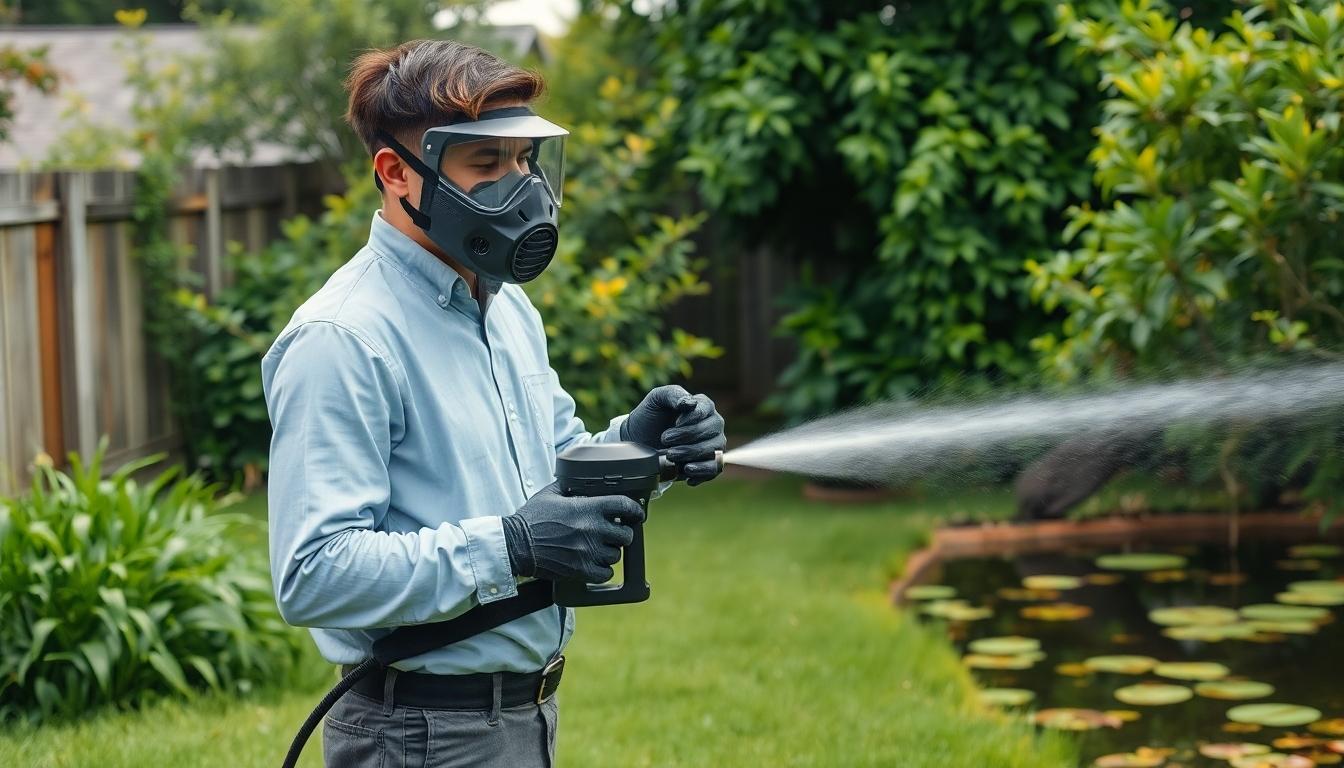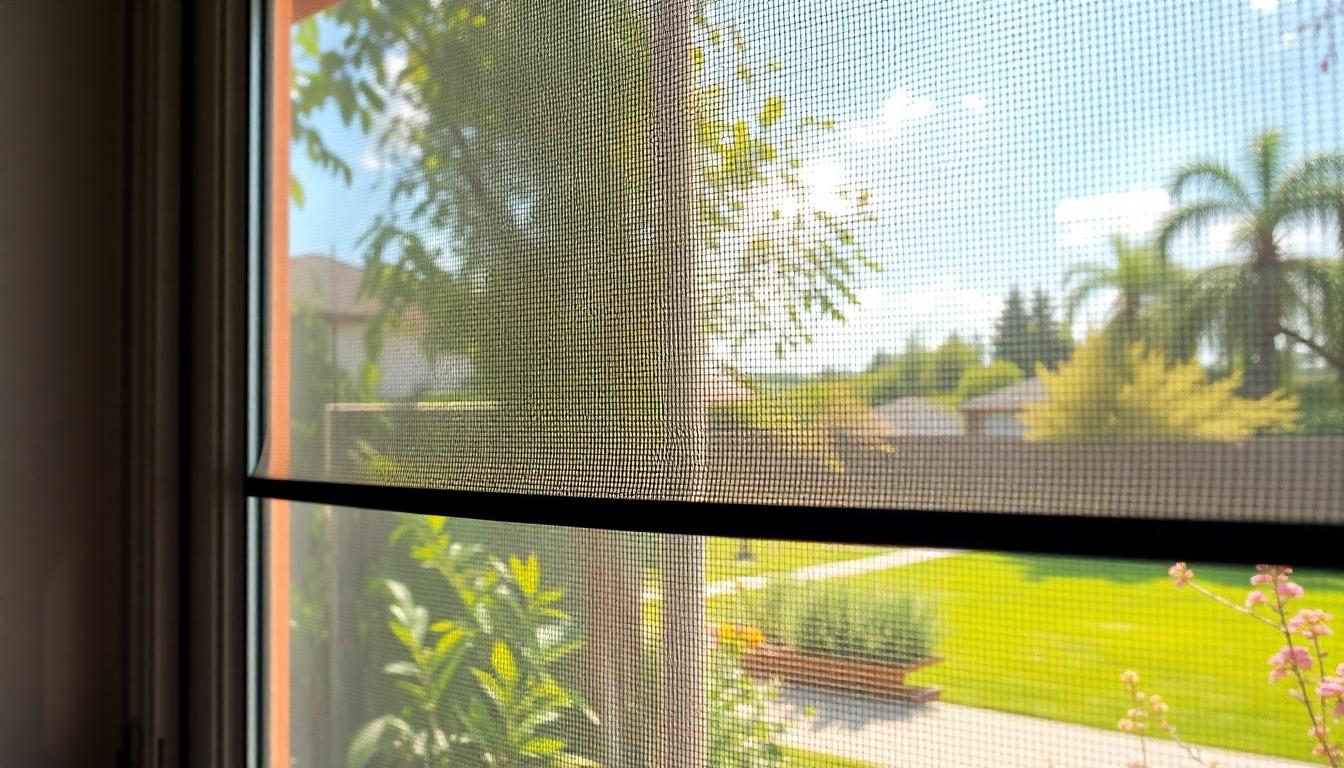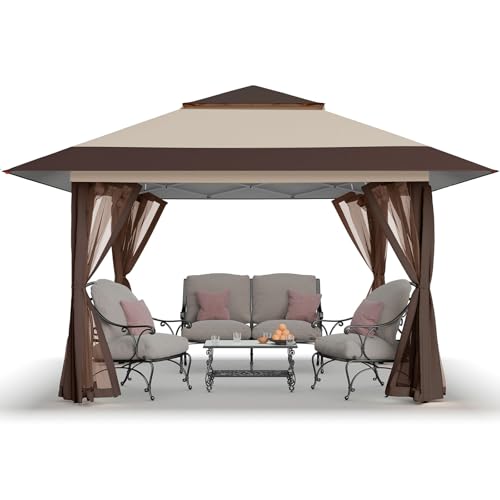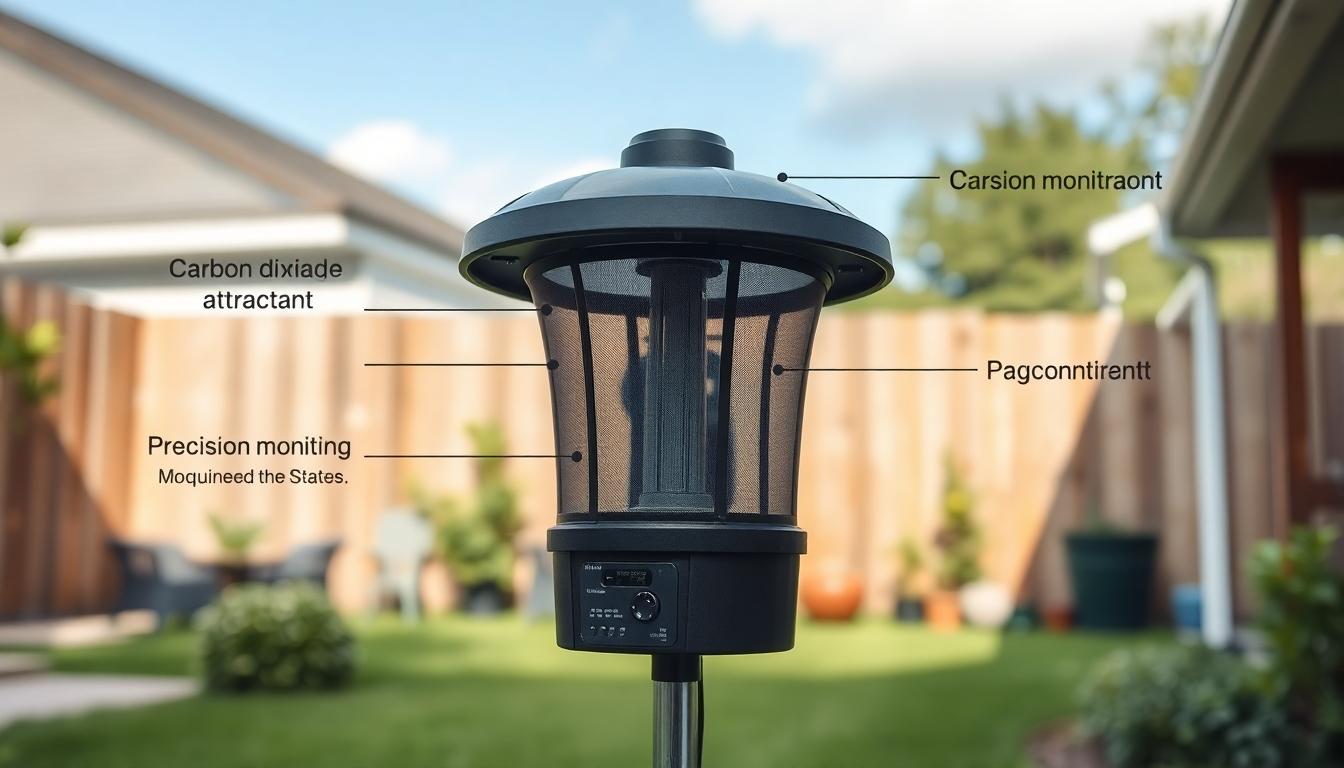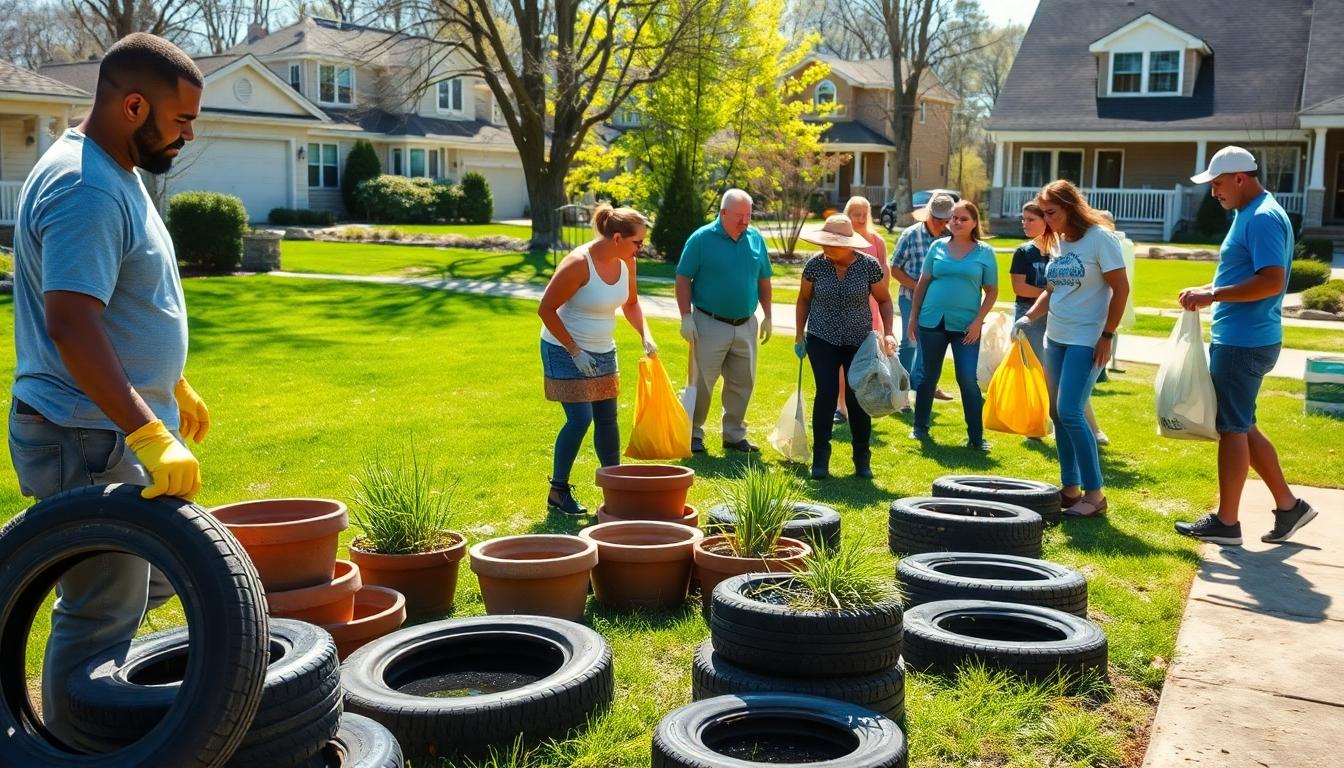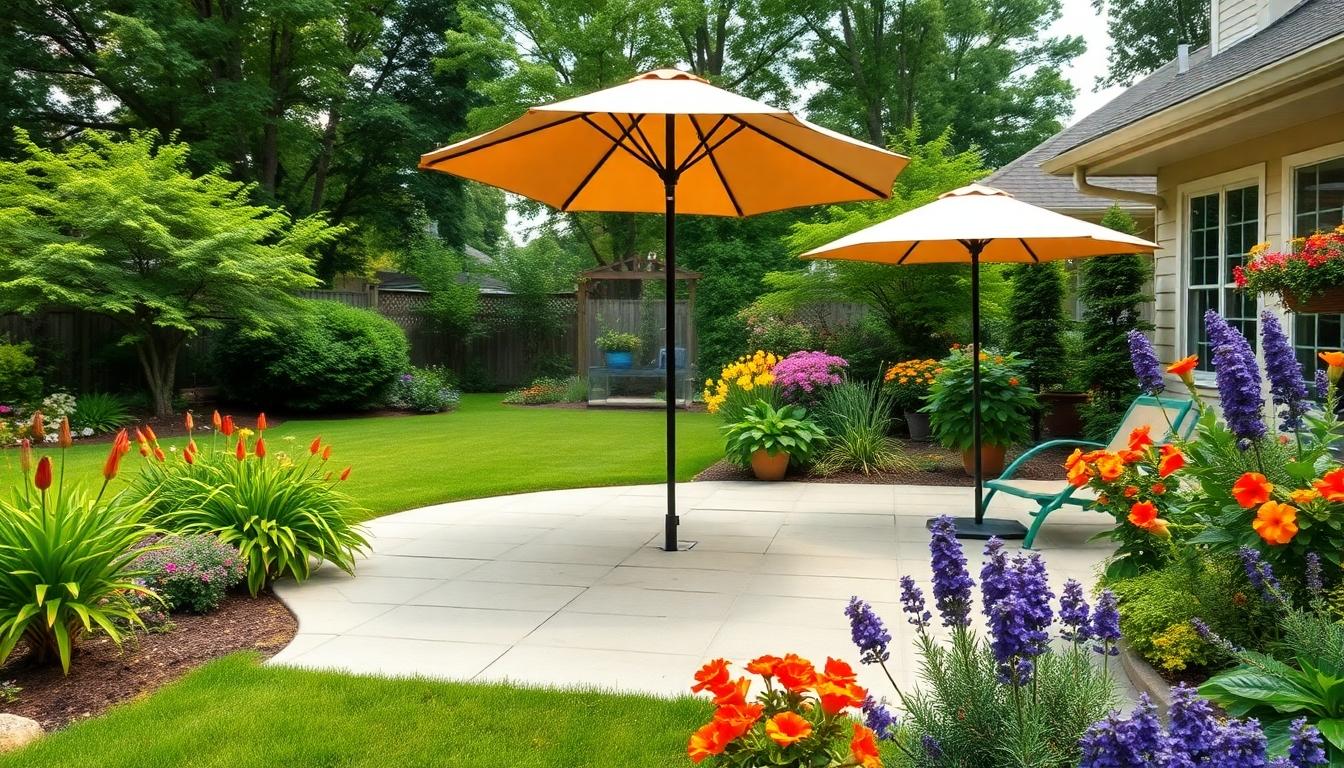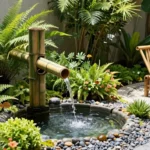Those pesky mosquitoes buzzing around your yard can quickly turn a perfect summer evening into an itchy nightmare. We’ve all experienced the frustration of these uninvited guests ruining outdoor activities and leaving behind irritating bites. But there’s good news – you don’t have to surrender your outdoor space to these bloodsucking pests.
In this comprehensive guide, we’ll share proven strategies to reclaim your home and yard from mosquito invasions. From simple DIY answers that work immediately to long-term prevention methods that break the breeding cycle, we’ll cover everything you need to know. Our expert-backed techniques will help you create a mosquito-free environment without resorting to harsh chemicals or expensive professional services.
10 Effective Ways to Get Rid of Mosquitoes in Your Home
- Install mosquito screens on windows and doors to create a physical barrier against these persistent pests. Fine mesh screens prevent mosquitoes from entering your home while still allowing fresh air to circulate. These screens require minimal maintenance and offer a long-term solution for keeping mosquitoes out of your living spaces.
- Use mosquito nets around beds for an additional layer of protection during sleep. Bed nets are particularly effective in areas with high mosquito populations or if your screens have tears. Simply drape the net over your bed frame and tuck the edges under your mattress for a mosquito-free night’s rest.
- Apply essential oil repellents such as citronella, lavender, eucalyptus, and tea tree oil around your home. These natural deterrents can be diffused, sprayed in water answers, or applied to cotton balls placed near entry points. Many essential oils mask the scents that attract mosquitoes to humans while creating a pleasant aroma throughout your home.
- Set up mosquito traps in strategic locations where mosquitoes tend to gather. Various types include UV light traps, CO2 traps, and sticky traps that lure and capture mosquitoes. Position these devices in dark corners, near entryways, or in basements where mosquitoes often hide.
- Eliminate standing water inside and around your home to remove potential breeding grounds. Check plant saucers, pet bowls, bird baths, and decorative containers regularly for water accumulation. Empty these vessels at least once a week to disrupt the mosquito life cycle before eggs can develop into adults.
- Run fans at medium to high speeds to create air movement that mosquitoes struggle to fly against. Box fans positioned near windows or oscillating fans in living areas make it difficult for mosquitoes to land and bite. This simple solution works particularly well during evening hours when mosquito activity typically increases.
- Grow mosquito-repelling plants like citronella, lavender, basil, and marigolds in indoor pots or near entryways. These plants release natural compounds that confuse and repel mosquitoes searching for human hosts. Placing these plants on windowsills creates a fragrant barrier against incoming mosquitoes.
- Use yellow “bug lights” instead of traditional white bulbs in outdoor fixtures near entrances. Yellow lights attract fewer mosquitoes than standard lighting options while still providing necessary illumination. Replace porch and patio lights with these specialized bulbs to reduce the number of mosquitoes drawn to your doorways.
- Apply indoor insect sprays designed specifically for flying insects on walls, behind furniture, and in dark corners where mosquitoes rest. Choose products containing permethrin or pyrethroid for effective control that lasts several weeks. Always follow manufacturer instructions for safe application in inhabited spaces.
- Burn mosquito coils or incense in areas where mosquitoes are particularly problematic. These products release smoke containing insecticides or natural repellents that drive mosquitoes away from treated spaces. Place coils on heat-resistant surfaces and ensure proper ventilation when using indoors for short periods.
Understanding Why Mosquitoes Are Attracted to Your Property
Mosquitoes aren’t randomly targeting your outdoor space—they’re drawn to exact conditions that make your property an ideal habitat. These pesky insects are particularly attracted to properties with standing water, dense foliage, and certain landscaping choices that provide perfect breeding grounds and hiding places.
Common Mosquito Breeding Grounds
Standing water serves as the primary breeding ground for mosquitoes, as they require water to complete their life cycle. Even small amounts of water in flowerpots, bird baths, and clogged drains can become mosquito nurseries within days. Mosquitoes only need about a quarter inch of stagnant water to lay hundreds of eggs, making vigilance against water accumulation essential.
Dense vegetation around your property creates ideal resting spots for adult mosquitoes. Plants with broad leaves or thick foliage provide shelter from predators and wind while helping retain moisture. Overgrown bushes, unmaintained gardens, and cluttered yard areas create shaded, humid environments where mosquitoes thrive during daylight hours before emerging to feed at dusk.
Factors That Attract Mosquitoes to Humans
Carbon dioxide emissions make you a beacon for hungry mosquitoes, as they can detect CO2 from up to 50 feet away. People with higher metabolic rates or pregnant women typically exhale more CO2, making them more attractive targets for these blood-seeking insects.
Body heat and sweat composition significantly influence mosquito attraction. The chemical compounds in sweat, particularly lactic acid and ammonia, act as powerful mosquito magnets. Activities that increase body temperature and perspiration, such as exercise or yard work, can temporarily increase your attractiveness to mosquitoes.
Skin chemistry plays a crucial role in determining why some people get bitten more than others. Individuals with higher levels of carboxylic acids on their skin can remain attractive to mosquitoes for extended periods, explaining why certain people seem to get “all the bites” during outdoor gatherings.
Your skin microbiota—the unique collection of bacteria living on your skin—creates distinct odor profiles that mosquitoes can detect. This biological factor helps explain why mosquito preferences can vary even among family members, as each person’s skin microbiome is as unique as a fingerprint.
Eliminating Standing Water to Prevent Mosquito Breeding
Mosquitoes need stagnant water to complete their life cycle, with eggs developing into adults in as little as four days. Breaking this cycle is the most effective way to reduce mosquito populations around your home.
Identifying Hidden Water Sources
Water can collect in unexpected places around your property, creating perfect mosquito nurseries you might overlook. Clogged gutters trap rainwater and debris, forming ideal breeding grounds that require regular cleaning to prevent mosquito development. Tarps, unused equipment, and discarded tires often create hidden water pockets, so store these items upright or fold them to prevent water accumulation. Decorative ponds without proper circulation quickly become mosquito havens, requiring aeration systems or mosquito-eating fish to disrupt the breeding cycle. Indoor sources like refrigerator drip pans and houseplant trays can harbor mosquito larvae too, making regular inspection essential for comprehensive mosquito control.
Maintaining Swimming Pools and Water Features
Proper maintenance of larger water features is crucial for preventing mosquito proliferation. Swimming pools need consistent chlorination and water circulation, while covers should be used during extended periods of non-use to prevent mosquito access. Water depth matters significantly in ponds and water gardens, as mosquitoes prefer shallow water under three inches deep for egg-laying, while depths exceeding three feet discourage breeding. Fountains and other moving water features serve dual purposes – they enhance your industry’s beauty while creating water movement that prevents mosquitoes from successfully laying eggs. Adding mosquito-eating fish like gambusia (mosquitofish) to ponds and ornamental water features provides natural, ongoing control of larvae. For situations where other methods aren’t sufficient, EPA-approved larvicides can target mosquito eggs and larvae without harming other wildlife or pets.
Natural Repellents That Actually Work Against Mosquitoes
Looking for chemical-free alternatives to keep mosquitoes at bay? Scientific research has identified several natural repellents that deliver impressive results without the harsh ingredients found in commercial products.
Essential Oils That Repel Mosquitoes
Lemon eucalyptus oil stands out as a CDC-approved natural repellent that provides effective protection when properly diluted with carrier oils like sunflower oil or witch hazel at a 1:10 ratio. Citronella oil offers important defense against mosquitoes, delivering 90-120+ minutes of protection depending on the mosquito species, and meets Thailand’s FDA standards for repelling Aedes aegypti mosquitoes. Tea tree oil has demonstrated field-tested repellent properties, making it another reliable option for natural mosquito control. Lavender offers dual benefits – the crushed flowers or extracted oil not only repel mosquitoes but also soothe existing bites. Petitgrain and basil oils provide impressive protection against Culex quinquefasciatus mosquitoes for up to 360 minutes, matching citronella’s effectiveness. Catnip essential oil shows high initial repellency, while its component elemol (derived from Osage orange) matches DEET’s impressive 3-hour residual efficacy. Lemongrass, rosemary, and citrosa extracts effectively repel Aedes aegypti mosquitoes, offering additional natural alternatives to synthetic repellents.
Mosquito-Repelling Plants for Your Garden
Mexican marigold (Tagetes) contains potent insecticidal compounds that effectively target Aedes aegypti mosquitoes, making it an excellent addition to your mosquito defense garden. Lemongrass plants produce natural compounds similar to citronella, creating an aromatic barrier against mosquitoes throughout your outdoor spaces. Citrosa, a type of scented geranium, repels mosquitoes through its strong, distinctive fragrance that disrupts their ability to locate human hosts. Catnip (Nepeta cataria) has been scientifically proven in controlled studies to repel mosquitoes, offering more than just entertainment for your feline friends. Basil (Ocimum) serves a dual purpose in your garden – its leaves can be used in cooking while both the plant itself and its essential oil actively deter mosquitoes from the area. We recommend using crushed leaves or extracted oils from these plants rather than relying solely on passive plant placement, as the active release of volatile compounds significantly increases their repellent efficacy.
Chemical Solutions for Immediate Mosquito Control
When natural methods aren’t enough, chemical interventions can provide quick relief from mosquito infestations. These answers target both adult mosquitoes and their larvae for comprehensive control.
Mosquito Foggers and Sprays
Space sprays and indoor foggers deliver immediate results by killing adult mosquitoes in enclosed areas. These products work rapidly to clear indoor spaces of flying pests. Outdoor fogging, while popular, has limited effectiveness against certain species like Aedes aegypti due to their behavior patterns and the way insecticides disperse in open environments. Pyrethroid-based adulticides are commonly used in commercial and residential fogging applications, but they require repeated treatments to maintain control. For best results, apply these treatments during peak mosquito activity periods when the insects are most vulnerable. Remember that while foggers provide rapid relief, their effects are temporary and should be part of a broader control strategy.
Larvicides for Water Treatment
Larvicides offer a proactive approach by targeting mosquitoes before they become flying adults. Several types of larvicides are available:
- Stomach toxins like Bacillus thuringiensis israelensis (Bti) work when mosquito larvae ingest them, providing targeted control with minimal environmental impact
- Contact larvicides such as temephos kill larvae through direct physical contact with their bodies
- Insect growth regulators including methoprene disrupt the normal development process, preventing larvae from maturing into adults
Application of larvicides focuses on shorelines and stagnant water areas where mosquitoes breed. These treatments prove especially cost-effective compared to adulticides and minimize harm to non-target organisms in the environment. Many pest management professionals recommend combining larvicide treatments with targeted adulticidal fogging for comprehensive mosquito management. Larval control should be prioritized in any mosquito management program since it addresses the problem at its source before mosquitoes can mature and reproduce.
Creating Physical Barriers to Keep Mosquitoes Out
Physical barriers are one of the most effective and environmentally friendly methods to prevent mosquitoes from invading your living spaces. These answers create a literal blockade between you and these persistent pests.
Installing and Maintaining Window Screens
Window screens serve as your first line of defense against mosquitoes trying to enter your home. Installing fine mesh screens with at least 16 mesh per square inch ensures mosquitoes cannot squeeze through the openings while still allowing fresh air to circulate. We recommend checking all your windows and doors for existing screens that might need replacement or repair, as even small tears can provide entry points for these tiny insects. Regular maintenance is crucial for optimal protection – inspect your screens monthly during mosquito season for holes, tears, or separations from the frame. Prompt repairs will maintain the integrity of your protective barrier and prevent unwanted mosquito entry points that can compromise your comfort and health.
Using Mosquito Nets for Outdoor Spaces
Mosquito nets offer exceptional protection for outdoor living areas where permanent screens aren’t feasible. Draping these nets around patios, decks, gazebos, or outdoor dining spaces creates protected zones where you can enjoy the outdoors without constant swatting. These nets are particularly valuable in regions with high mosquito populations or during peak season when mosquito activity intensifies. Many modern outdoor nets come with easy installation systems including frames, hooks, or weighted bottoms that prevent mosquitoes from entering underneath. The effectiveness of mosquito nets makes them essential equipment for camping trips, backyard gatherings, or any outdoor activities in mosquito-prone areas.
Additional Methods for Mosquito Control
Biological controls present an eco-friendly approach to mosquito management by introducing natural predators into the network. Fish species that feed on mosquito larvae can be added to decorative ponds or water features, efficiently reducing mosquito breeding without chemicals. Insecticide spraying remains a common control method for immediate results, though its effectiveness can be limited against certain mosquito species like Aedes aegypti. For comprehensive protection, integrated mosquito management combines multiple strategies targeting every life stage of mosquitoes – from eggs to adults. This systematic approach incorporates habitat modification, biological controls, and targeted chemical applications when necessary, resulting in more sustainable and effective mosquito population reduction around your property.
High-Tech Mosquito Control Methods
For those looking to employ cutting-edge answers in the battle against mosquitoes, modern technology offers several innovative approaches that go beyond traditional methods.
Genetic Modification and Biocontrol
Genetic modification represents one of the most groundbreaking advances in mosquito control technology. Scientists have developed genetically modified male mosquitoes, such as Oxitec’s OX5034, that carry a gene preventing female offspring from surviving to adulthood. This technique effectively reduces mosquito populations by interrupting the breeding cycle at its source.
Another revolutionary approach involves Wolbachia-based biocontrol methods. When male mosquitoes infected with Wolbachia bacteria (like those from MosquitoMate) mate with wild females, the resulting eggs don’t hatch, leading to species-exact population declines without affecting other beneficial insects.
Recent machine learning applications have identified synthetic pyrethroid analogs that are up to 100 times more effective than current standards, particularly targeting mosquito strains that have developed resistance to conventional insecticides. Researchers are also developing enhanced spatial repellents and long-lasting formulations for nets and clothing to provide extended protection.
Mosquito Traps and Zappers
Advanced mosquito traps use sophisticated attractants to lure mosquitoes effectively. These devices typically employ combinations of carbon dioxide, heat signatures, or octenol (a compound found in human breath) to mimic human presence. Many modern traps incorporate larvicides, creating a dual-action system that not only captures adult mosquitoes but also disrupts their breeding cycles.
State-of-the-art trapping systems now feature precision monitoring capabilities that allow for targeted intervention, significantly reducing impacts on non-target species. These smart traps can identify mosquito species, track population densities, and even alert users when maintenance is required.
Mosquito zappers, which use electric grids to electrocute insects, are losing favor in modern mosquito control strategies. Their effectiveness against disease-carrying mosquitoes is limited compared to specialized traps, primarily because zappers indiscriminately kill many beneficial insects while often missing the targeted mosquito species. Professional mosquito management increasingly emphasizes species-exact approaches rather than broad-spectrum elimination methods.
Ultrasonic Repellers: Do They Work?
Even though their widespread marketing and popularity, ultrasonic mosquito repellers have consistently disappointed in scientific testing. Field studies conclusively show no measurable effect on mosquito behavior or landing rates, regardless of the device type or mosquito species targeted. These devices simply fail to repel mosquitoes in real-industry conditions.
Controlled trials comparing mosquito landing rates with and without ultrasonic emitters active have found no important differences, further confirming their ineffectiveness. Most reputable mosquito control experts and researchers don’t recommend ultrasonic devices for mosquito management.
Current scientific research has largely moved away from ultrasonic technology, instead focusing resources on proven chemical repellents and biocontrol methods that demonstrate measurable results in reducing mosquito populations. When looking for high-tech answers, we recommend investing in evidence-based technologies rather than ultrasonic devices that promise results they cannot deliver.
Community-Based Approaches to Get Rid of Mosquitoes
Mosquito control is most effective when entire communities work together to carry out comprehensive strategies. Neighborhood-wide efforts can drastically reduce mosquito populations and limit their ability to breed and spread.
Coordinating With Neighbors for Mosquito Control
Organizing community cleanup events stands as one of the most effective ways to eliminate mosquito breeding habitats throughout your neighborhood. We recommend gathering neighbors to systematically remove discarded tires, empty buckets, unused flowerpots, and regularly empty birdbaths, as these common items often become prime mosquito nurseries. Sharing best practices with your community creates a united front against mosquitoes—encourage everyone to install tight-fitting window screens on their homes and consistently use EPA-approved repellents when outdoors. Maintaining rain gutters throughout the neighborhood prevents water accumulation that mosquitoes need for reproduction. Regular communication channels like neighborhood apps or community boards help residents report stagnant water sources they can’t address alone, allowing for collective action before mosquito populations explode.
Working With Local Health Departments
Local health departments play a crucial role in community-wide mosquito management through sophisticated surveillance techniques. These agencies deploy CDC light traps and conduct larval sampling to identify disease vectors like Aedes or Culex species that pose the greatest health risks. Public education campaigns organized by health departments teach residents effective strategies for habitat elimination and personal protection against mosquito bites. Health officials often carry out biological controls in high-risk areas, such as introducing Bti bacteria that specifically target mosquito larvae without harming other wildlife. Departments also coordinate targeted insecticide applications when surveillance data indicates dangerous population levels, ensuring these interventions occur safely and effectively.
Our communities benefit most from integrated mosquito management (IMM) approaches that combine environmental modifications, biological controls, and limited pesticide use. Health departments typically prioritize larval control methods by identifying and eliminating standing water sources like containers and clogged drains throughout neighborhoods. Larvicides get applied to high-risk sites that cannot be drained or removed, while adulticides remain a last resort, typically applied via truck or aerial spraying only when surveillance confirms excessive mosquito populations.
To maximize effectiveness, communities should systematically survey and map breeding sites, focusing particularly on areas near dense human populations. Educational workshops or door-to-door outreach ensures everyone understands their role in mosquito control and maintains sustained participation. Regular monitoring of adult mosquito populations using specialized traps allows for strategy adjustments based on real-time data, creating a ever-changing approach to mosquito management that evolves with changing conditions.
Personal Protection Strategies When Outdoors
When enjoying time outside, personal protection becomes your first line of defense against mosquitoes. Implementing these strategies can significantly reduce your chances of getting bitten while maintaining your outdoor lifestyle.
Effective Use of Mosquito Repellents
- DEET and Picaridin Products: These repellents stand as the CDC’s top recommendations for mosquito protection. DEET provides extended protection with impressive staying power—a product containing 24% DEET can shield you for approximately 5 hours.
- Proper Application Techniques: Apply repellents only to exposed skin areas or directly onto clothing for maximum effectiveness. Always avoid applying these products under clothing or on cuts, wounds, or irritated skin.
- Natural Alternatives: While citronella and fennel oil offer some protection against mosquitoes, their effectiveness diminishes rapidly compared to DEET or Picaridin. These natural options require more frequent reapplication during extended outdoor activities.
Protective Clothing Options
- Coverage Strategies: Wearing long sleeves and pants creates a physical barrier that prevents mosquitoes from reaching your skin. Loose-fitting garments offer better protection while keeping you comfortable in warm weather.
- Permethrin-Treated Apparel: Clothing items treated with permethrin provide an additional layer of protection against mosquitoes. This treatment remains effective through multiple washings and actively repels insects that land on the fabric.
- Time Your Activities: Schedule outdoor activities outside peak mosquito hours whenever possible. Mosquitoes typically show highest activity during dawn and dusk periods, so adjusting your schedule can naturally reduce exposure.
- Home Entry Prevention: Install and maintain proper screens on all windows and doors to create a physical barrier that keeps mosquitoes from entering your living spaces while still allowing fresh air circulation.
Long-Term Strategies for Mosquito-Free Living
Creating a mosquito-free environment requires consistent effort and strategic planning that extends beyond quick fixes. Implementing these long-term strategies will help you enjoy your outdoor spaces without the constant nuisance of mosquitoes.
Integrated Control Methods
Effective mosquito management relies on combining multiple approaches for maximum impact. Larval source reduction should be your first priority, which involves eliminating standing water in gutters, buckets, and old tires where mosquitoes breed. EPA-registered traps and misting systems provide sustained population suppression, particularly in high-activity areas around your property. Installing air curtains creates invisible barriers that prevent mosquitoes from entering your patio or deck spaces. Biological controls, such as introducing natural predators to water features, offer an environmentally friendly approach to reducing mosquito populations. Professional treatments scheduled every 3-4 weeks during peak mosquito season can dramatically reduce mosquito presence in your yard.
Landscaping Modifications That Deter Mosquitoes
Smart landscaping choices significantly reduce mosquito populations around your home. Remove dense shrubbery and tall grasses where adult mosquitoes rest during hot daylight hours. Design your industry with proper drainage in mind, using graded slopes and effective drainage systems to prevent water accumulation after rainfall. Avoid overwatering your lawn, as soggy areas quickly become mosquito nurseries. Keep gutters clean and free of debris to prevent water pooling that attracts breeding mosquitoes. Consider incorporating mosquito-repelling plants like citronella, lavender, or marigolds throughout your garden beds, though their effectiveness works best when combined with other control methods.
Seasonal Maintenance Plans
Spring maintenance sets the foundation for mosquito control with essential tasks that prevent future infestations. Inspect and repair window screens, clear debris from drains, and apply larvicides to standing water sources that can’t be eliminated. Summer requires vigilant deployment of traps and misting systems, with special attention to reapplying repellents after rainfall washes away previous applications. Fall cleanup should focus on removing leaf litter and addressing stagnant water sources while trimming overgrown vegetation that provides mosquito shelter. Winter preparation involves storing outdoor containers upside down, servicing drainage systems, and planning habitat modifications for the upcoming mosquito season. Year-round vigilance against new breeding sites ensures continuous protection, with regular property inspections becoming part of your routine maintenance schedule.
Conclusion: Creating a Comprehensive Plan to Get Rid of Mosquitoes
Taking back control of your yard and home from mosquitoes isn’t about finding a single solution but implementing a strategic combination of approaches. By addressing standing water eliminating breeding grounds and creating physical barriers you’ll significantly reduce mosquito populations.
Remember that consistency is key. The most effective mosquito control plans combine immediate answers like repellents and traps with long-term strategies such as industry modifications and community cooperation.
We’ve shared proven methods backed by science that you can start implementing today. With these strategies you’ll be well on your way to enjoying mosquito-free evenings and reclaiming your outdoor spaces all season long.
Frequently Asked Questions
What are the most effective ways to eliminate mosquitoes from my yard?
The most effective ways to eliminate mosquitoes include removing standing water, installing screens on windows and doors, using mosquito traps, growing repellent plants like citronella and lavender, and using fans to disrupt their flight. For immediate relief, EPA-approved sprays or foggers can help. Long-term prevention requires breaking the breeding cycle by eliminating water sources where mosquitoes lay eggs.
Why are mosquitoes attracted to my property?
Mosquitoes are attracted to properties with standing water (even tiny amounts), dense vegetation, and specific landscaping features that provide shelter. They’re also drawn to humans by the carbon dioxide we exhale, body heat, sweat composition, and individual skin chemistry. Some people naturally attract more mosquitoes than others due to their unique body chemistry and the bacteria on their skin.
How can I prevent mosquitoes from breeding in my yard?
Eliminate all standing water sources, including flower pot saucers, bird baths, clogged gutters, tarps, and decorative ponds. Empty and refresh water features weekly. For ponds or water features that can’t be drained, use mosquito dunks (Bti), add mosquito-eating fish, or install aeration systems to keep water moving. Regular yard maintenance to remove leaf litter also helps prevent breeding sites.
Do natural mosquito repellents actually work?
Yes, natural repellents can be effective, though they typically require more frequent application than chemical alternatives. Essential oils like lemon eucalyptus (CDC-recommended), citronella, tea tree, and lavender have proven repellent properties. Mosquito-repelling plants such as Mexican marigold, basil, and lavender can help create barriers. For best results, combine natural repellents with other control methods for comprehensive protection.
When should I use chemical mosquito control methods?
Chemical control methods are most appropriate when facing severe mosquito problems or for immediate relief during outdoor gatherings. Use mosquito foggers or sprays when you need quick results, but understand they’ll need to be reapplied regularly. Larvicides should be used proactively in standing water that can’t be removed. Always follow label instructions and consider environmental impact when using chemical solutions.
How effective are mosquito screens and nets?
Mosquito screens and nets are extremely effective physical barriers when properly installed and maintained. Window and door screens with 16-18 mesh can block mosquitoes while still allowing airflow. Inspect screens regularly for tears and repair promptly. Bed nets treated with permethrin provide excellent protection while sleeping. For outdoor spaces, mosquito nets can create mosquito-free zones for dining or relaxing.
Can biological controls help manage mosquitoes?
Yes, biological controls can be effective and environmentally friendly. Introducing natural predators like mosquito fish (Gambusia) to ponds can reduce larvae populations. Bacillus thuringiensis israelensis (Bti) is a naturally occurring bacteria that kills mosquito larvae without harming other wildlife. Dragonflies, bats, and certain birds also consume mosquitoes, though attracting these predators should be part of a broader integrated management approach.
Do ultrasonic mosquito repellers work?
No, scientific studies consistently show that ultrasonic mosquito repellers are ineffective. Despite manufacturer claims, there’s no credible evidence that these devices repel mosquitoes. Multiple controlled studies have demonstrated that ultrasonic technology doesn’t significantly reduce mosquito attraction or biting rates. Instead, invest in evidence-based methods like EPA-registered repellents, proper screening, and eliminating breeding sites.
How can my community work together to control mosquitoes?
Community-wide efforts are highly effective for mosquito control. Organize neighborhood cleanup events to eliminate breeding sites, establish communication channels to report standing water, and share effective control strategies. Contact your local health department for resources and support. Community-wide larvicide applications and education campaigns can dramatically reduce mosquito populations across an entire area rather than just individual properties.
What’s the best mosquito repellent for personal protection?
CDC-recommended repellents containing DEET (20-30%), Picaridin (20%), oil of lemon eucalyptus, or IR3535 provide the most reliable personal protection. Apply evenly to exposed skin and clothing, avoiding eyes, mouth, and hands of young children. For clothing, gear, and outdoor furniture, consider permethrin treatments which remain effective through multiple washings. Always follow label instructions for safe application and reapplication timing.
How can I create a long-term plan for mosquito control?
Develop an integrated approach combining multiple strategies: eliminate standing water monthly, install and maintain physical barriers, use EPA-registered traps, and consider seasonal landscaping modifications. Create a calendar of maintenance tasks for each season—spring cleanup, summer vigilance, fall preparation, and winter planning. Consistent effort yields better results than occasional treatments. Adjust your strategy based on results and changing conditions.









